This site is part of various affiliate programs. Links may give us a small compensation for any purchases you make, at no additional cost to you. Please read the disclaimer policy for full details.
When comparing the Contax TVS vs TVSii, the main differences that the Contax TVSii has over the TVS in order of importance are: brighter viewfinder, zoom ring instead of zoom lever, omitted panorama function, integrated lens cap, and a $100 higher price tag. So if you shoot in the dark often, then the TVS II is a better option. Otherwise, the TVS will be just fine.
If you have ever dived into Contax cameras, especially point-and-shoot ones, you’ve most likely come across the Contax TVS and its successor, the TVS II. However, if you have looked at both of them, you’ve realized that they are pretty similar. In fact, they are nearly identical.
Being quite similar to each other, one would assume that the TVS II is not exactly a successor but just a refresh of the original TVS with a couple of tweaks. That thinking is quite true, and the differences aren’t that big. However, they feel more like the quality of life changes instead of feeling like generational improvements.
The TVS and the TVSII are among the most popular Contax point-and-shoot cameras due to their quality optics and reliable autofocus system, among other things.
Kyocera, the company that owns the Contax brand, targets the high-end camera market with the Contax TVS and the TVS II, competing with Leica.
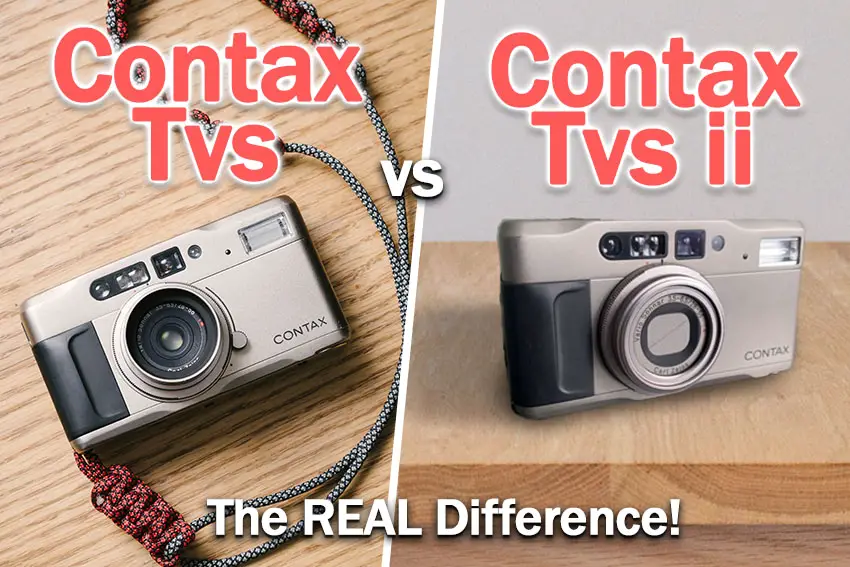
Contax TVS Overview
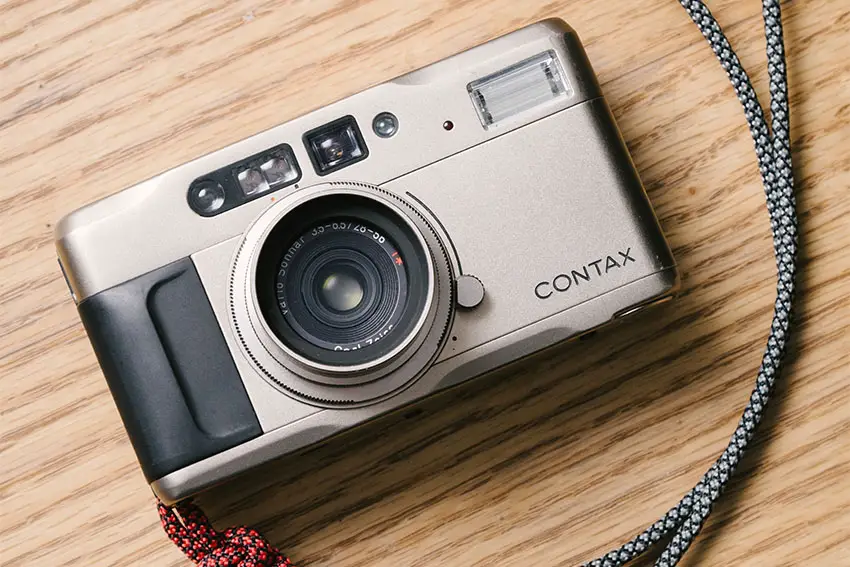
Features:
- Film: 35mm, DX ISO 25-5000, Non-DX Default ISO 100
- Lens: Carl Zeiss T* Vario Sonnar 28-56mm f/3.5-6.5
- Aperture Range: f/3.5 – f/16
- Shutter Speed: 16s – 1/700s
- Exposure Compensation: +/- 5 EV in 1/3 EV Steps
- Size: 123x67x41.5mm
- Weight: 375g
Kyocera designed the TVS to improve some of the aspects of the T2, which is the fixed focal length cousin of the TVS, by adding a couple of technologies along with a zoom lens. This way, Contax aimed to capture a broader audience with a larger number of use cases for the camera.
Kyocera uses Carl Zeiss T* lenses for all of the Contax cameras, which is a great selling point, given the fact that Carl Zeiss lenses are excellent.
The TVS uses a Vario Sonnar lens, meaning that the lens has a variable (Vario) focal length and a midrange optical design (Sonnar).
Carl Zeiss had three lines of lenses back then, the Tessar (simpler design, not the brightest), Sonnar (better design, relatively brighter than the Tessar), and Planar (the best optical design and the brightest of them all).
The 28-56mm 2x lens allows you to shoot from a relatively wide angle to decent midrange telephoto, which is nice.
You’ll notice that the camera is autofocus enabled, with a decent passive autofocus system which is aided by an active IR lamp in the dark. There is a manual focus dial available if you choose to focus manually, and the autofocus metering will tell you when you are in focus.
Most point-and-shoot cameras are fully automatic, meaning they decide every setting for you. With the TVS, Kyocera decided to add some manual punctuality in their point-and-shoot cameras to cater to the professional photographers.
So you can shoot this camera in full auto mode, or you can use aperture priority, where you set the aperture, and the camera decides the shutter speed.
You can further control that via a +/- 5EV exposure compensation. In other words, it is not entirely manual but quite close to it.
The titanium casing makes the camera quite rugged and cool looking, which is why you’ll often see the TVS or the T2/T3 in the hands of celebrities or fashion influencers. It is great that you can pocket this camera when the lens is retracted.
- Pros:
- Fantastic looks and retro design that everyone loves.
- Quite durable due to the titanium build and casing.
- The lens is incredibly sharp.
- You can use it in fully automatic mode or in aperture priority mode.
- +/- 5EV of exposure compensation in ⅓ stop increments.
- Zoom lens.
- Cons:
- The zoom lens is quite dark at the telephoto end.
- Wide apertures restrict maximum shutter speed.
- The lens flex cable is known to break often.
- Slightly darker viewfinder.
Contax TVS Example Photos
Contax TVS II Overview
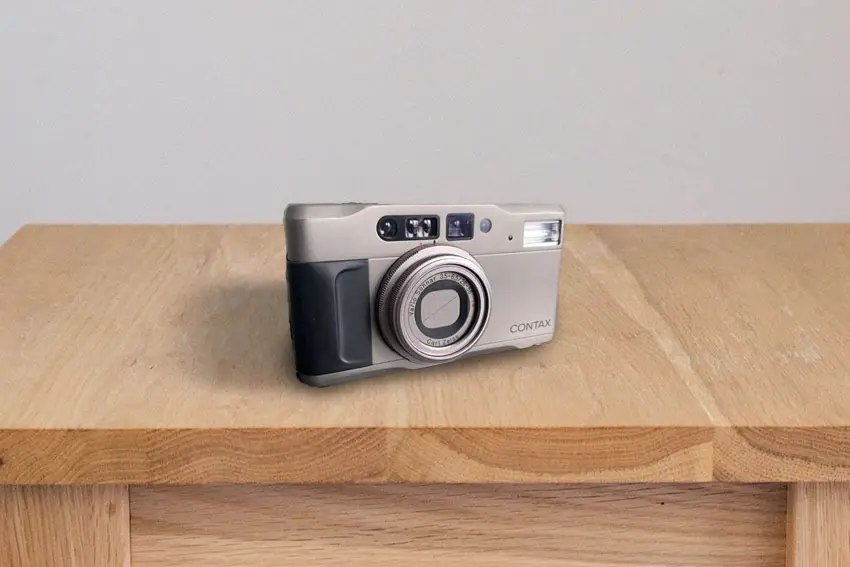
Features:
- Film: 35mm, DX ISO 25-5000, Non-DX Default ISO 100
- Lens: Carl Zeiss T* Vario Sonnar 28-56mm f/3.5-6.5
- Aperture Range: f/3.5 – f/16
- Shutter Speed: 16s – 1/700s
- Exposure Compensation: +/- 5 EV in 1/3 EV Steps
- Size: 123x67x45.5mm
- Weight: 375g
The Contax TVS II came three years later than the Contax TVS, and even though technically it is a successor, it feels more like a generational refresh. That might sound like a bad thing, but remember that the TVS was already a great camera, and there wasn’t much that needed improving.
At least, there wasn’t much that Kyocera could have improved with the technology at the time.
So the TVS II is essentially a TVS, with a couple of quality of life differences. It features the same body, and it looks nearly identical.
However, the lens now has an integrated lens cap. You turn on and zoom the camera via a ring instead of a lever. There is no panorama function anymore, and most importantly, the viewfinder is significantly brighter.
The design is still the same cool retro-looking titanium. But you’ll notice that flaps cover the lens when you turn off the camera. It is the same Carl Zeiss T* Vario Sonnar 28-56mm f/3.5-6.5 zoom lens. It is still razor-sharp, without any known optical changes.
- Pros:
- Same looks and retro design of the TVS.
- Durable thank to the titanium casing.
- Very sharp lens.
- You can use it in fully automatic mode or in aperture priority mode.
- +/- 5EV of exposure compensation in ⅓ stop increments.
- Zoom lens.
- Brighter viewfinder.
- Cons:
- The zoom lens is quite dark at the telephoto end.
- Wide apertures restrict maximum shutter speed.
- The lens flex cable is known to break.
- Slightly more expensive.
Contax TVSii Photos
Below are some example photos from the Contax TVS ii to give you an idea of how it handles.
Contax TVS vs TVS II Comparison
Since these cameras are essentially the same, we will go through the slight incremental changes so you can better understand what is different between them.
Lens Quality
Both cameras use an identical lens design. Image quality-wise, there is no difference.
However, the way to turn on the camera and zoom the lens has been changed mechanically.
The TVS uses a lever, which you push to turn on the camera, and then you move to adjust the zoom. That has been changed to a ring style in the TVSii, where you twist the ring to turn on the camera and then use the same ring to zoom the camera by twisting it in both directions. The zoom range is the same.
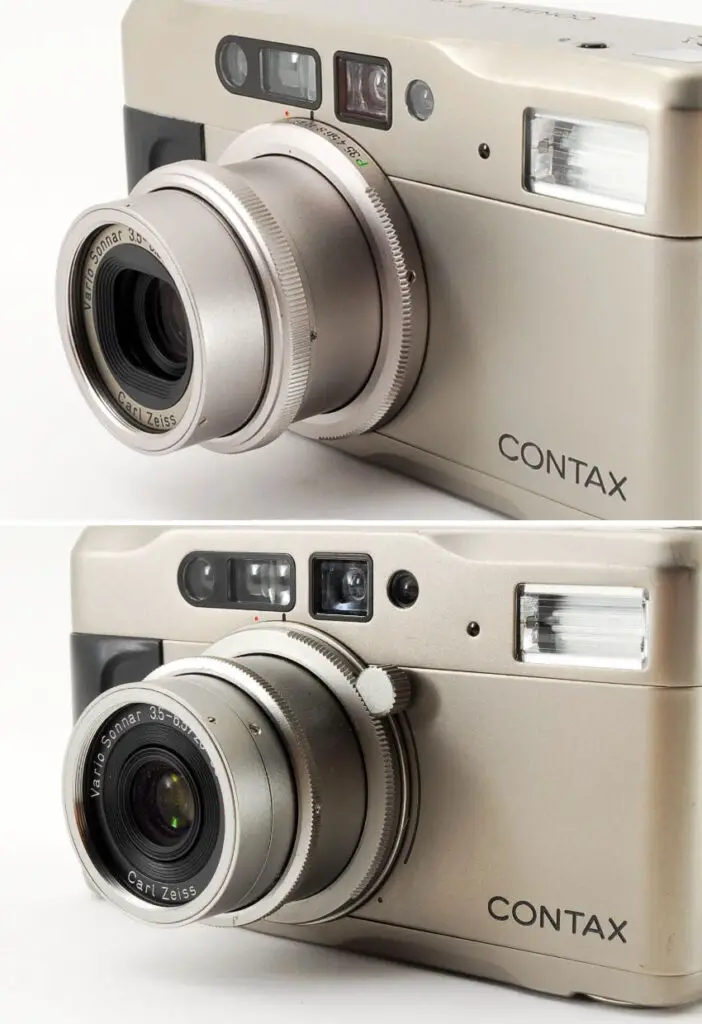
There is no change in functionality; just the mechanics are different. So the TVS uses a lever to zoom, while the TVS II uses a more conventional zoom ring. In this scenario, it is a matter of personal preference which is better.
The TVS II has an integrated lens cap, which is good if you lose lens caps often. With the cap being integrated into the form of two flaps that close the lens, you might save some dollars in lens caps. That, however, makes the lens 4mm longer.
So, having a lens cap or integrating it isn’t really that big of a difference; thus, that falls into the personal preference category.
Autofocus
Both cameras feature the same autofocus system, so there are no apparent changes. There might be some changes in the internal components due to revisions and simplifications, and there might be some speed and accuracy improvements in fringe cases with the TVS II.
That being said, the autofocus is the same for all intents and purposes.
Shooting Modes and Usability
Both cameras feature the same shooting modes. Meaning that you can shoot both cameras in fully automatic mode, or you can use aperture priority. There are no changes here.
The panorama function that the TVS had was omitted in the TVS II because it wasn’t popular at all. Essentially, two flaps blocked the light from hitting the top and bottom parts of the film. Those lines were never sharp, and it was practically useless since you could always crop the film afterward. So it was an essentially meaningless mechanism that added complexity. So Kyocera decided to ditch it in the TVS II.
So if you like having the panorama function, then the TVS wins. Otherwise, if the panorama function isn’t essential to you, then the TVS II wins due to reduced complexity.
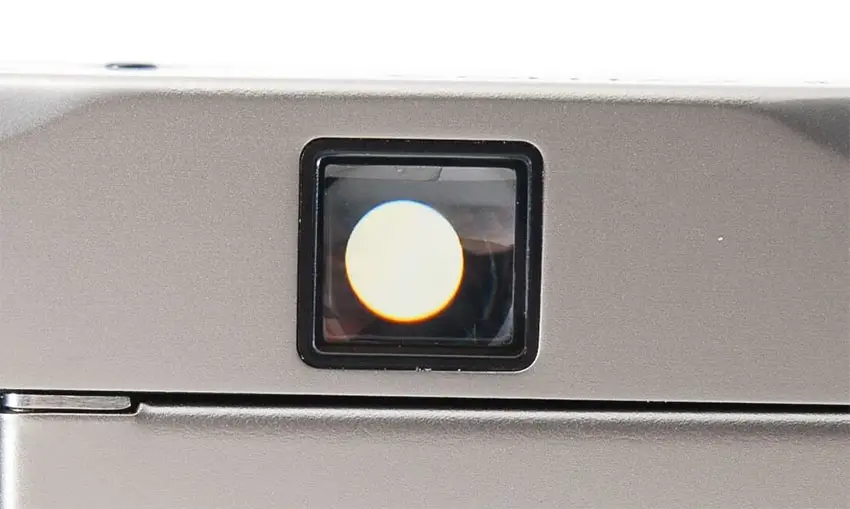
Improving the viewfinder is the most crucial upgrade this camera got. The TVS didn’t have a bad viewfinder. Plenty of competing (and more expensive cameras) have significantly worse viewfinders. The Leica Minilux is one of them. However, Kyocera had the capability to improve the viewfinder, so it is brighter, and thus makes it easier for you to compose your photos, and so they did.
In this case, the TVS II is an obvious winner. A brighter viewfinder is a clearer viewfinder.
Style and Design
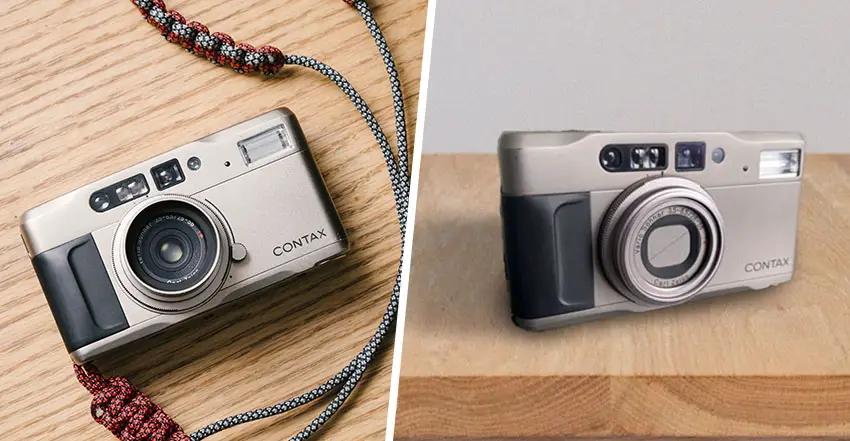
Both cameras look and feel nearly identical. The only visible differences are the lettering (of course), the lens cap, and the zoom lever/ring.
So, at first glance, the design is the same. Neither camera has advantages in the looks and style department, and both look equally cool.
Price
In the case of the T2 vs the T3, the price difference was almost trifold. Luckily, in this case, the price difference is around $100, give or take.
A mint Contax TVS will set you back around $400. In comparison, a mint Contax TVS II will set you back around $500.
The price difference is not that high. However, the Contax TVS has a slight edge, being 20% cheaper.
Which is the Better Option Between the Contax TVS vs TVSII?
The Contax TVS II is the better option if we compare features alone. The most significant improvement over the TVS is the much brighter viewfinder. The zoom ring is a more convenient way to zoom for some people, while others wouldn’t mind the lever. Saving some money by not being able to lose the lens cap is always a good thing.
The TVS II being $100 more expensive might be a problem for some.
So the question is whether a brighter viewfinder and some quality-of-life changes are worth $100? The answer is yes if you shoot in low light often. The brighter viewfinder will help out a lot. If you don’t shoot in bright environments a lot, then the Contax TVS will be just fine.


Read More:

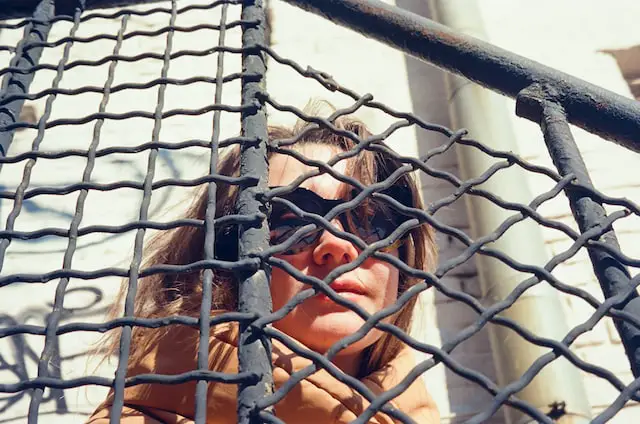
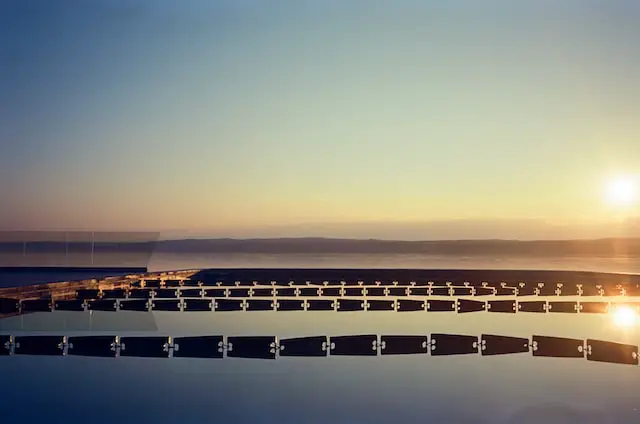






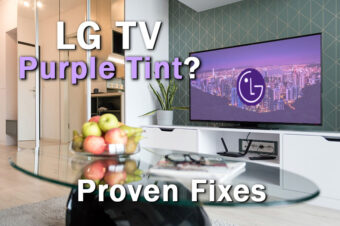

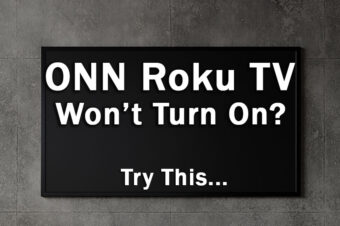
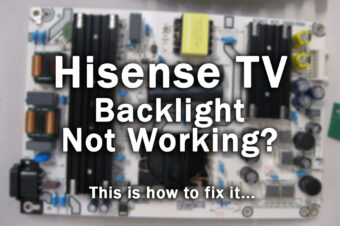
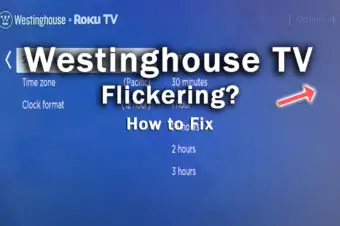
2 Responses
Rp
I have both. The TVS II was a cost cutting downgrade to the TVS I. The LCD auto masking feature in the viewfinder which updates the view to show what will be in the picture similar to an SLR was removed. I am sure this was an expensive feature and is very important for close up shots. Also the panoramic format feature was removed which allows switching to a wide panoramic format as needed. This actually makes a huge difference in veratility. The ability to switch between 3:2 and 3:1 format us incredibly useful, especially combined with the wide angle zoom. You can compose dramatic sweeping wide angle panoramas without a lot of boring streched foreground in the shot. The viewfinder panorama masks kicks in to allow you to visualize the shot also. Final point is that the zoom lever is easier to use than the ring, espe ially for turning the camera on.
Basically, the TVSII was a maajor cost cutting reduction of features to improve profit margins.
Tim Daniels
Thanks for the comment – really interesting perspective.